10 Captivating Acrylic Painting Ideas to Inspire Your Artistic Journey
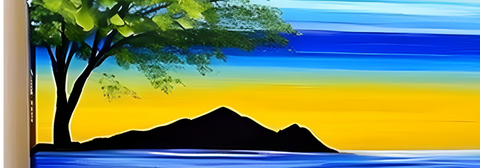
Acrylic painting is a versatile and captivating art form that allows artists to express their creativity and imagination. Whether you are a beginner or an experienced artist, acrylic painting offers endless possibilities to explore and experiment with color, texture, and composition. In this article, we will delve into the world of acrylic painting, providing you with essential techniques, tips, and inspiring ideas to unlock your artistic potential.
Acrylic painting for beginners: Getting started with the basics
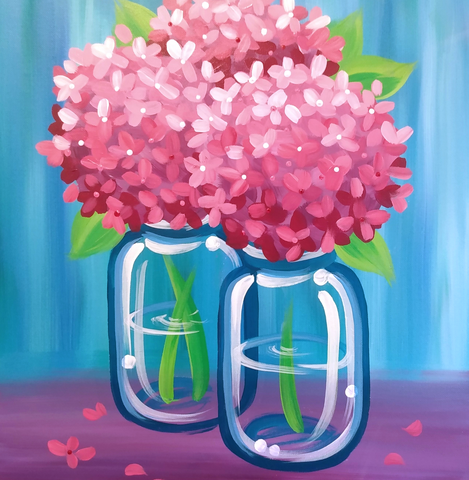
If you are new to acrylic painting, it's important to familiarize yourself with the basics before diving into more complex techniques. Acrylic paint is known for its quick-drying properties, vibrant colors, and ability to be layered. To get started, you will need a set of acrylic paints, brushes, a palette, canvas or paper, and some water for cleaning your brushes.
Begin by practicing basic brushstrokes and color mixing. Experiment with different brush sizes and shapes to create varying effects. Acrylic paint can be diluted with water to create transparent washes or used straight from the tube for bold, opaque strokes. Don't be afraid to make mistakes, and embrace the learning process. With time and practice, you will develop your own unique style and techniques.
Essential acrylic painting techniques to master
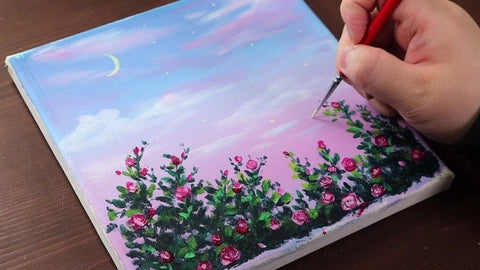
To create captivating acrylic paintings, it is essential to master a few fundamental techniques. One such technique is the wet-on-wet method, where you apply wet paint to a wet surface. This allows colors to blend and create soft, seamless transitions. Another technique is dry brushing, which involves using a small amount of paint on a dry brush to create texture and highlight details.
Layering is another important technique in acrylic painting. By applying multiple layers of paint, you can add depth and dimension to your artwork. Experiment with transparent layers to create luminosity, or use opaque layers for bold, vibrant colors. Additionally, you can create interesting textures by using different tools, such as sponges, palette knives, or even household items like toothbrushes.
Exploring different acrylic painting styles

Acrylic painting offers a wide range of styles and approaches to suit every artist's taste. From realistic landscapes to abstract expressionism, there are endless possibilities to explore.
Realistic acrylic painting involves capturing the details and nuances of the subject matter with precision and accuracy. This style requires patience, observation, and a keen eye for detail.
On the other hand, abstract acrylic painting allows artists to break free from traditional representation and explore the language of color, shape, and texture. This style encourages experimentation and spontaneity, as artists rely on their intuition and emotions to guide their artistic choices. Abstract painting can be a liberating and expressive form of self-expression.
How to choose the right acrylic painting supplies

Choosing the right acrylic painting supplies is crucial for achieving the desired results in your artwork. When selecting acrylic paints, opt for artist-grade paints rather than student-grade ones. Artist-grade paints have a higher pigment concentration, which results in more vibrant and long-lasting colors.
Invest in a variety of brushes with different shapes and sizes. Synthetic brushes are suitable for acrylic painting as they are durable and retain their shape well. Additionally, consider the surface you will be painting on. Canvas is a popular choice for acrylic painting, but you can also experiment with other surfaces such as wood, paper, or even metal.
Step-by-step tutorial: Creating a stunning acrylic painting on canvas
Now, let's put our knowledge into practice and create a stunning acrylic painting on canvas. For this tutorial, we will paint a serene landscape with a colorful sunset.
Start by sketching the basic outline of your landscape using a pencil. Divide the canvas into thirds to create a visually pleasing composition.
Mix your colors on a palette. Use warm tones such as red, orange, and yellow for the sunset sky and cool tones like blue and purple for the landscape.

Begin by painting the sky using broad brush strokes. Blend the colors together to create a smooth transition from one shade to another.
Once the sky is complete, move on to the landscape. Paint the foreground, middle ground, and background using different shades of green, brown, and blue.
Add details such as trees, mountains, or any other elements you wish to include in your landscape. Use smaller brushes for precision.
Allow the painting to dry completely before adding any final touches or highlights. You can use a thin brush to add fine details or a palette knife for texture.

Step back and evaluate your painting. Make any necessary adjustments or additions to enhance the overall composition.
Remember, this tutorial is just a starting point. Feel free to experiment with different colors, compositions, and subject matters to find your own unique style.
Acrylic painting tips and tricks for beginners

As a beginner in acrylic painting, it's natural to encounter challenges along the way. Here are some tips and tricks to help you navigate through the learning process:
Start with a limited color palette: Limiting your color choices will help you focus on color mixing and create harmony in your artwork.
Keep your brushes clean: Acrylic paint dries quickly, so it's important to clean your brushes regularly to prevent them from hardening.
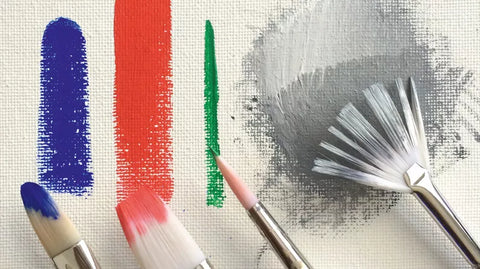
Experiment with different techniques: Don't be afraid to try new techniques and explore different styles. This will help you discover your preferences and develop your artistic voice.
Practice layering: Layering is an effective way to add depth and complexity to your paintings. Experiment with different opacities and textures to create interesting effects.
Take breaks: Painting for long periods can be mentally and physically exhausting. Take regular breaks to rest your eyes and recharge your creative energy.
Inspiring acrylic painting ideas for beginners

Now that you have a solid foundation in acrylic painting, let's explore some inspiring ideas to spark your creativity:
Paint a Still Life: Arrange objects such as flowers, fruits, or everyday objects and paint them using acrylics. Focus on capturing their form, texture, and colors.
Create a self-portrait: Challenge yourself by painting a self-portrait. Explore different techniques to capture your likeness and express your personality.
Experiment with abstract patterns: Let go of representational painting and embrace abstraction. Play with colors, shapes, and patterns to create visually captivating compositions.

Paint a landscape: Use reference photos or your imagination to create stunning landscapes. Experiment with different lighting conditions and weather effects to add drama to your paintings.
Explore mixed media: Combine acrylic paint with other mediums such as collage, pastels, or markers to create mixed media artworks with unique textures and visual interest.
Remember, the most important thing is to enjoy the process and let your creativity flow. Don't be afraid to make mistakes and learn from them.
Advanced acrylic painting techniques to take your art to the next level

Once you have mastered the basics, it's time to take your acrylic painting skills to the next level. Here are some advanced techniques to challenge yourself:
Glazing: Glazing involves applying thin, transparent layers of paint over dry layers to create depth and luminosity. Experiment with different glazing mediums to achieve the desired effects.
Impasto: Impasto is a technique where thick layers of paint are applied to create texture and three-dimensionality. Use a palette knife to create bold, sculptural effects in your paintings.
Pouring: Acrylic pouring is a popular technique that involves pouring diluted acrylic paint onto a canvas and allowing the colors to blend and create abstract patterns. This technique requires careful control of the pouring process and can result in stunning, unpredictable outcomes.
Sgraffito: Sgraffito is a technique where you scratch or scrape the top layer of paint to reveal the layers underneath. This can create interesting textures and add visual interest to your paintings.
Remember, these advanced techniques require patience, practice, and experimentation. Don't be discouraged if your first attempts don't turn out as expected. Embrace the learning process and keep pushing your boundaries.
Showcasing cool acrylic painting ideas for experienced artists

For experienced artists looking for new challenges and inspiration, here are some cool acrylic painting ideas to ignite your creativity:
Expressive abstracts: Dive into pure abstraction and let your emotions guide your brushstrokes. Experiment with bold colors, gestural marks, and expressive compositions.
Wildlife portraits: Capture the beauty and majesty of wildlife through acrylic painting. Focus on capturing intricate details, textures, and the essence of the animals.
Cityscapes: Paint vibrant cityscapes that capture the energy and atmosphere of urban life. Experiment with different perspectives, lighting conditions, and architectural details.
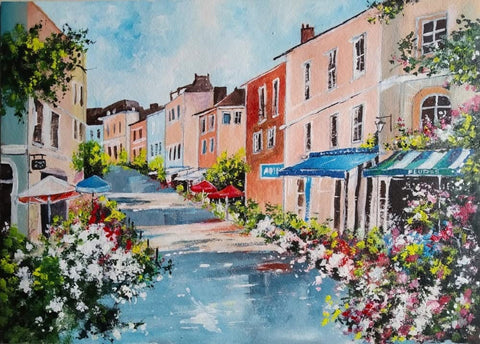
Surreal landscapes: Combine elements from different landscapes to create dreamlike and surreal compositions. Let your imagination run wild and create captivating, otherworldly scenes.
Still life with a twist: Put a unique twist on the traditional still life by incorporating unexpected objects or adding a touch of surrealism. Play with composition, lighting, and colors to create visually intriguing artworks.
Remember, the key to creating captivating acrylic paintings is to let your unique artistic voice shine through. Experiment with different ideas, techniques, and subject matters to find what resonates with you.
Conclusion: Unleash your creativity with acrylic painting
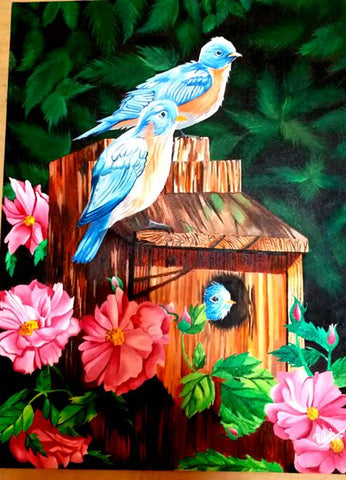
Acrylic painting is a wonderful medium that allows artists of all levels to explore their creativity, express their emotions, and unleash their imagination. Whether you are a beginner or an experienced artist, there is always something new to learn and discover in the world of acrylic painting.
By mastering the essential techniques, exploring different styles, and experimenting with inspiring ideas, you can take your art to new heights. Remember to embrace the learning process, be patient with yourself, and most importantly, have fun along the way.
So grab your brushes, squeeze out some vibrant colors, and embark on an artistic journey that will unlock your creativity and leave a lasting impression on the canvas.







Leave a comment
All comments are moderated before being published.
This site is protected by hCaptcha and the hCaptcha Privacy Policy and Terms of Service apply.